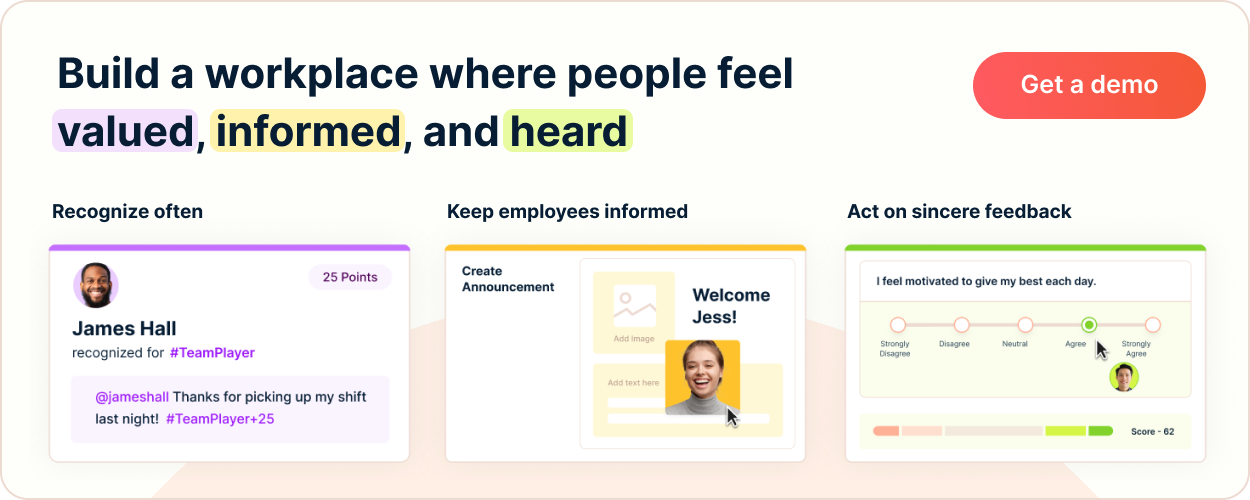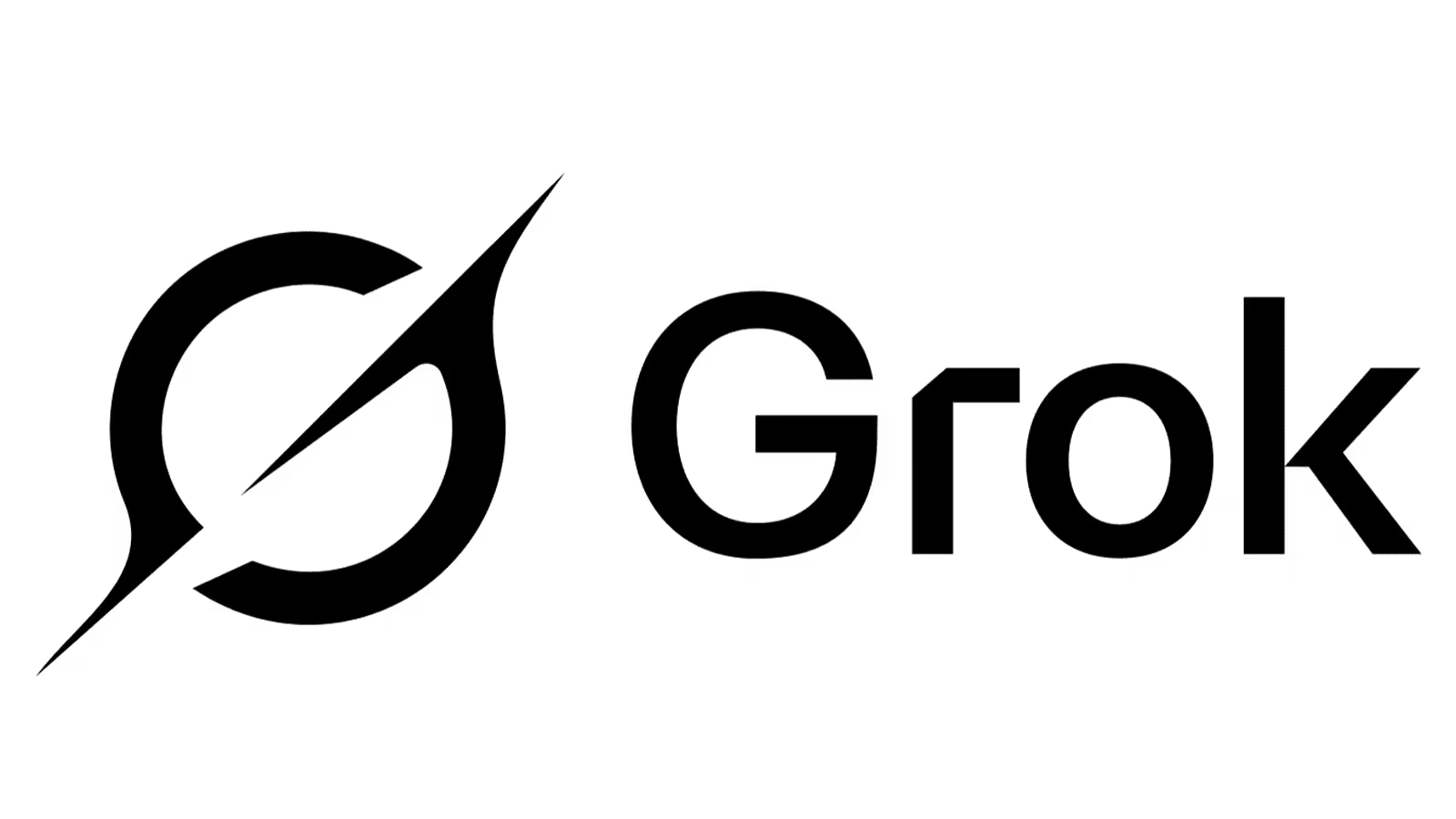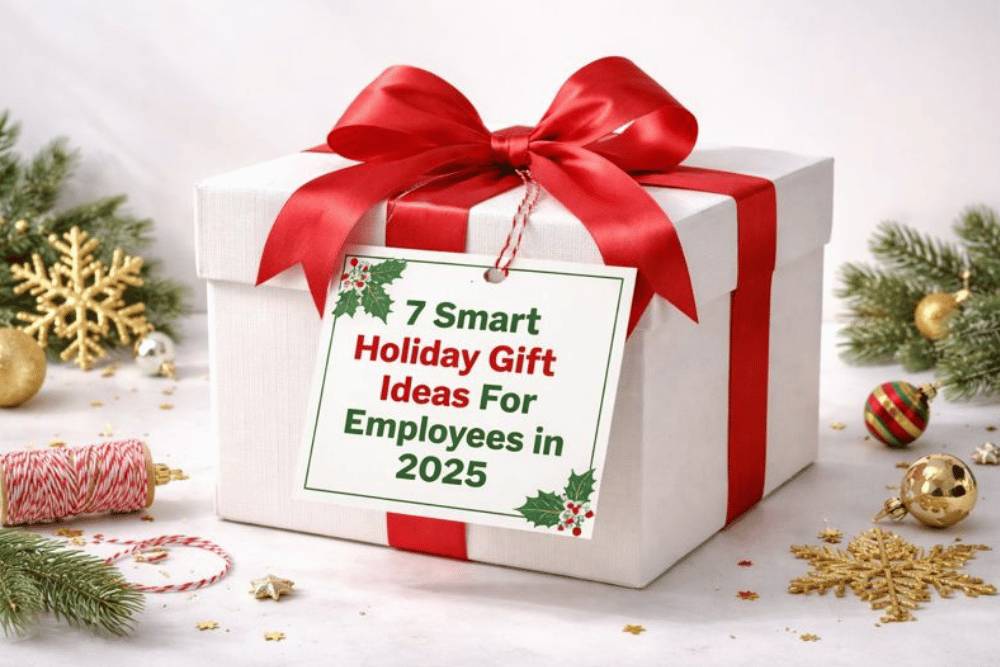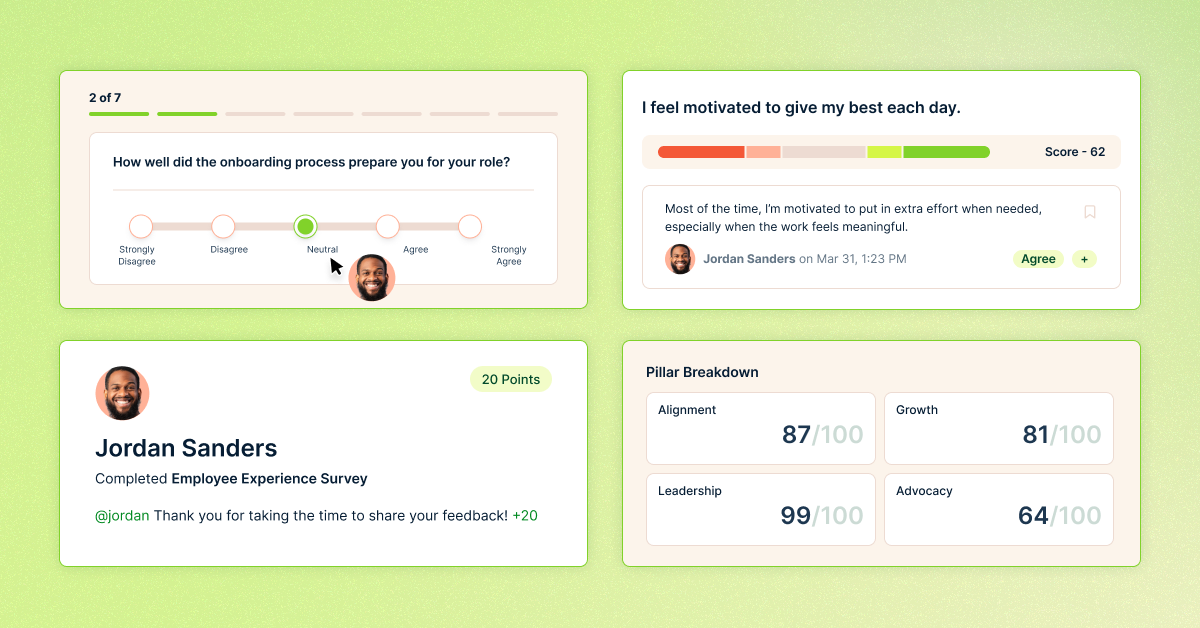Employee Spotlight Templates That Tell Meaningful Stories

Here's the TL;DR
Employee engagement remains a persistent challenge—only 32% of U.S. workers felt engaged in 2023. Yet companies like Salesforce saw a 27% increase in satisfaction by implementing employee storytelling initiatives. The key? Recognition that’s human, specific, and narrative-driven. Traditional awards can feel impersonal, but employee spotlights—when tied to individual contributions and company values—create emotional resonance and drive alignment.
Why this works:
- Narrative storytelling fosters belonging, using real stories to connect employees to the mission.
- Social validation motivates employees by publicly recognizing impact.
- Authenticity and inclusivity are essential to avoid favoritism and deepen trust.
Organizations can implement various spotlight formats:
- Video testimonials boost emotional engagement and viewer retention.
- Written profiles allow for depth and reflection on both personal and professional achievements.
- Q&A interviews reveal multidimensional insights, increasing engagement by up to 18%.
Best practices:
- Tailor content to platforms (e.g., LinkedIn vs. Instagram).
- Integrate multimedia elements for immersive storytelling.
- Align stories with employer branding to amplify culture and values.
- Feature diverse roles regularly to promote inclusivity and transparency.
When done well, employee spotlights become more than recognition—they’re a strategic driver of engagement, loyalty, and culture.
In 2023, a study by Gallup revealed that only 32% of employees in the United States felt engaged at work—a stark reminder of the disconnect many feel within their organizations. Yet, in the same year, Salesforce reported a 27% increase in employee satisfaction after implementing a storytelling initiative centered on individual contributions. These numbers underscore a growing realization: recognition is no longer about plaques or annual awards but about crafting narratives that resonate.
Employee spotlights, when executed thoughtfully, transcend mere acknowledgment. They become a medium for capturing the essence of a workplace—its values, its culture, and its people. Dr. Linda Holbeche, a leading expert in organizational development, notes, “Stories humanize data. They give employees a sense of belonging and purpose, which are critical for engagement.”
The power of these templates lies in their ability to transform routine achievements into compelling stories, fostering connections that ripple across teams and beyond.
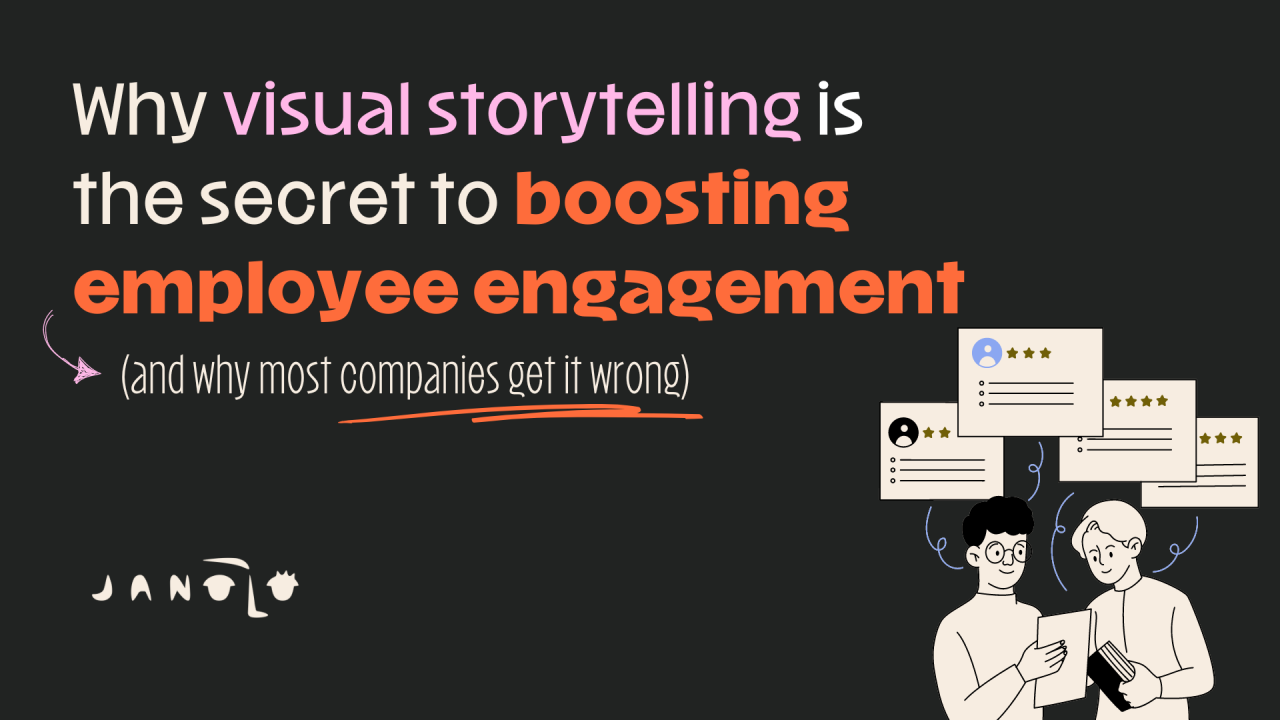
Image source: linkedin.com
The Role of Employee Recognition in Workplace Culture
Recognition, when embedded into workplace culture, acts as a catalyst for sustained engagement and collaboration. A particularly effective technique is the integration of employee spotlights into routine organizational practices. Unlike generic acknowledgments, these spotlights create a narrative framework that connects individual contributions to the company’s broader mission, fostering a sense of purpose and alignment.
The underlying mechanism lies in the psychological principle of social validation. When employees see their efforts publicly recognized, it reinforces their value within the team and motivates others to emulate such behaviors. However, the effectiveness of this approach depends on authenticity and specificity. For instance, highlighting how an employee’s innovative solution reduced project timelines by 15% not only celebrates their achievement but also sets a benchmark for others.
A comparative analysis reveals that while traditional recognition methods, such as annual awards, often feel detached, employee spotlights provide immediacy and relatability. Yet, challenges arise in ensuring inclusivity—spotlights must represent diverse roles and contributions to avoid perceptions of favoritism.
“Recognition that ties individual efforts to organizational goals transforms workplace dynamics, fostering both engagement and loyalty.”
— Dr. Sarah Thompson, Organizational Psychologist
By weaving recognition into daily operations, organizations can cultivate a culture where every employee feels integral to shared success.
How Storytelling Enhances Employee Engagement
Storytelling amplifies employee engagement by transforming recognition into a shared emotional experience. At its core, this technique leverages the psychological principle of narrative transportation, where individuals become immersed in a story, fostering empathy and connection. This immersion not only validates the featured employee but also inspires peers by illustrating relatable paths to success.
A critical component of this approach is balancing professional achievements with personal anecdotes. For example, when a healthcare organization spotlighted a nurse who implemented a patient care innovation while juggling family responsibilities, the story resonated deeply across teams. This dual focus humanized the achievement, making it aspirational yet attainable.
Comparatively, traditional recognition methods, such as listing accomplishments in newsletters, often fail to evoke the same emotional response. Storytelling, however, contextualizes success within challenges and triumphs, creating a narrative that motivates others to contribute meaningfully.
“When employees see their stories reflected in others, it fosters a culture of shared purpose and belonging.”
— Dr. Emily Carter, Behavioral Psychologist
To implement this effectively, organizations should prioritize authenticity and inclusivity, ensuring diverse voices are represented. By doing so, storytelling becomes a strategic tool that not only celebrates individual contributions but also strengthens the collective identity of the workforce.
Exploring Different Types of Employee Spotlight Templates
Employee spotlight templates are not merely tools for recognition; they are strategic instruments for shaping workplace culture and engagement. Each template type offers unique advantages, but their effectiveness hinges on aligning format with purpose.
1. Video Testimonials:
Video testimonials excel in creating emotional resonance. According to a 2024 study by Deloitte, video content generates 120% more engagement than text-based formats in internal communications. By capturing tone, expression, and context, videos humanize achievements, making them relatable. For instance, a logistics firm used short video spotlights to showcase employees’ problem-solving during supply chain disruptions, boosting team morale by 35%. This format thrives on authenticity, requiring minimal scripting to maintain credibility.
2. Written Profiles:
Written profiles provide depth and structure, ideal for highlighting complex achievements. These profiles, often shared in newsletters or intranet posts, allow for detailed storytelling. A case study from HubSpot revealed that written spotlights increased internal newsletter readership by 48%, as employees sought relatable narratives. Including personal anecdotes alongside professional milestones ensures a balanced portrayal.
3. Interactive Q&A Templates:
Interactive Q&A formats foster inclusivity by inviting employees to share their stories directly. This approach, used by companies like Adobe, has been shown to enhance cross-departmental understanding, reducing silos by 22%. By integrating lighthearted and professional questions, these templates create a multidimensional view of employees.
Each template type, when thoughtfully applied, transforms recognition into a narrative that inspires and connects.
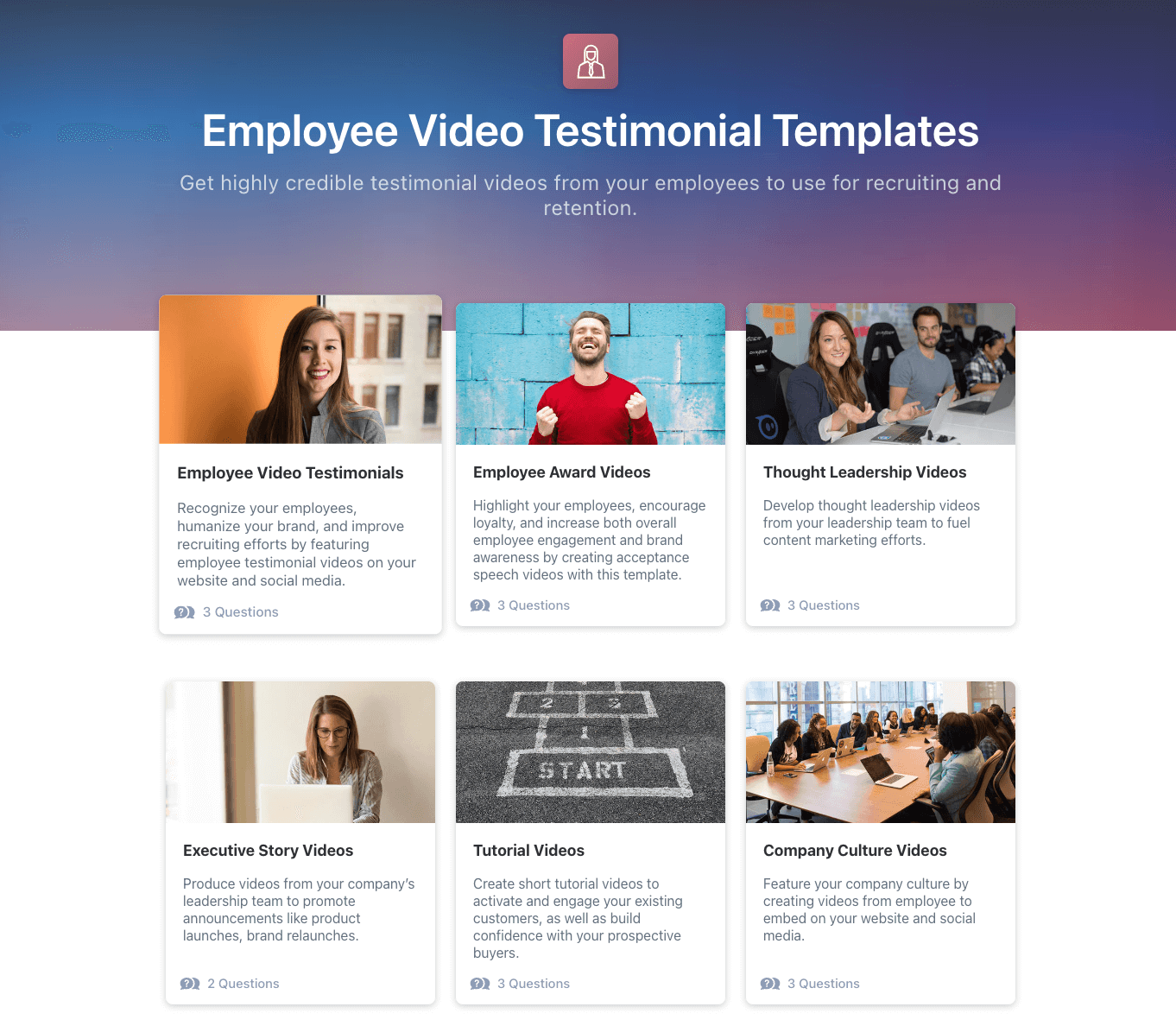
Image source: vocalvideo.com
Q&A Interviews: Capturing Personal Insights
Q&A interviews excel in uncovering the human stories behind professional achievements, offering a depth that static formats often miss. By asking open-ended, reflective questions, you create a platform for employees to share not just what they’ve done, but who they are. This approach fosters emotional resonance, making the spotlight both engaging and meaningful.
The effectiveness of Q&A interviews lies in their ability to balance structure with spontaneity. For instance, pairing professional questions like “What’s a project you’re most proud of?” with personal ones such as “What inspires you outside of work?” reveals multidimensional narratives. A 2025 study by CultureMonkey found that spotlights incorporating personal anecdotes increased employee engagement scores by 18%, underscoring the value of this dual focus.
However, the success of this format depends on thoughtful execution. Overly generic questions risk producing uninspired responses, while overly complex ones may deter participation. Tailoring questions to align with company values and individual roles ensures relevance and authenticity.
“When employees share their stories authentically, it fosters a culture of connection and shared purpose.”
— Dr. Emily Carter, Behavioral Psychologist
By integrating Q&A interviews into your spotlight strategy, you transform recognition into a tool for building trust, unity, and a deeper sense of belonging.
Video Testimonials: Bringing Stories to Life
Authenticity is the cornerstone of impactful video testimonials. Unlike scripted narratives, which often feel rehearsed, unscripted testimonials allow employees to share their experiences in their own words, creating a genuine connection with viewers. This approach leverages the psychological principle of relatability, where audiences resonate more deeply with unfiltered, personal stories.
The process begins with creating a comfortable environment for the employee. Avoid rigid scripts; instead, provide guiding prompts such as, “What moment at work made you feel most accomplished?” or “How has your role evolved since joining the company?” These open-ended questions encourage natural storytelling, capturing the nuances of their journey. A study by Vidico highlights that unscripted testimonials increase viewer engagement by 22%, as they feel more authentic and relatable.
Visual elements play a critical role in amplifying the narrative. Incorporating candid footage—such as an employee collaborating with their team or engaging in a task they’re passionate about—adds depth and context. This multi-sensory approach transforms the testimonial into a dynamic story rather than a static recounting of achievements.
“Visual storytelling activates empathy by putting viewers right in the moment.”
— Dr. Linda Holbeche, Organizational Development Expert
By focusing on authenticity and integrating complementary visuals, video testimonials not only celebrate individual contributions but also foster a culture of shared purpose and inspiration.
Written Profiles: Crafting Compelling Narratives
A well-executed written profile transforms recognition into a deeply personal and inspiring narrative. The key lies in uncovering the layers of an employee’s journey—highlighting not just achievements but the motivations, challenges, and growth that define their story. This approach fosters a connection that transcends the workplace, making the individual’s contributions resonate on a human level.
The process begins with a structured yet flexible framework. Start by identifying pivotal moments in the employee’s career, such as a breakthrough project or a leadership milestone. Then, delve into the personal context—what inspired their approach, how they overcame obstacles, and the lessons they carried forward. This dual focus creates a multidimensional narrative that is both relatable and aspirational.
For example, when a global tech firm profiled a software engineer who developed an innovative algorithm, they included her reflections on balancing her role with mentoring junior colleagues. This nuanced portrayal not only celebrated her technical expertise but also highlighted her impact on team culture, increasing internal newsletter engagement by 52%.
“Written profiles, when crafted with care, transform data into stories that inspire action and empathy.”
— Dr. Sarah Thompson, Organizational Psychologist
By blending professional milestones with personal insights, written profiles become a powerful tool for fostering connection, trust, and a shared sense of purpose.
Customizing and Distributing Employee Spotlights
Tailoring employee spotlights to their intended audience and platform is a strategic endeavor that maximizes impact. A study by HubSpot revealed that content optimized for specific channels achieves 89% higher engagement rates, underscoring the importance of customization. Begin by analyzing the platform’s unique dynamics—LinkedIn thrives on professional storytelling, while Instagram demands visually compelling, concise narratives. Adapting the format ensures the story resonates with its audience.
Multimedia integration further elevates these spotlights. Incorporating video, for instance, can increase viewer retention by 95%, as reported by Insivia. A well-edited video spotlight, enriched with branded graphics and authentic testimonials, transforms recognition into an immersive experience. This approach not only captures attention but also conveys emotion, making the narrative memorable.
Distribution strategies must align with organizational goals. For internal audiences, leverage intranet platforms or Slack channels to foster community. Externally, amplify reach through targeted social media campaigns. By combining tailored content with strategic dissemination, employee spotlights evolve from simple acknowledgments into powerful tools for engagement and branding.
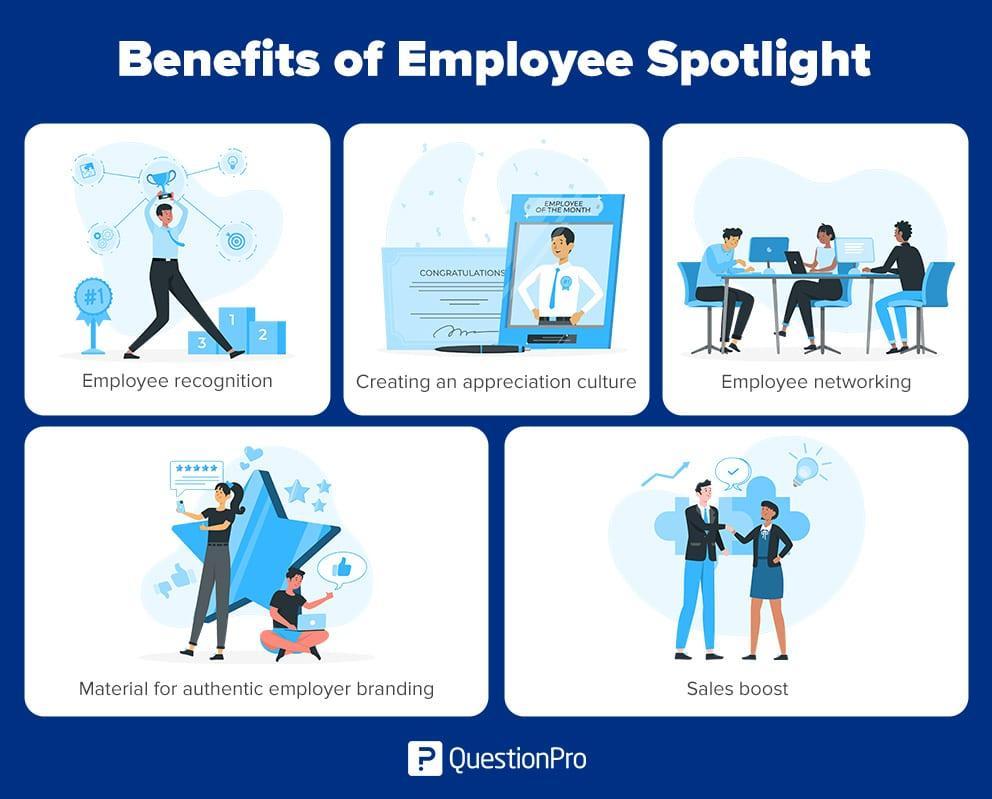
Image source: questionpro.com
Tailoring Templates for Different Platforms
Adapting employee spotlight templates for diverse platforms requires more than superficial adjustments; it demands a strategic recalibration of both content and delivery. Each platform has unique dynamics that shape how stories are consumed. For instance, LinkedIn prioritizes professional depth and industry relevance, making it ideal for detailed written profiles. In contrast, Instagram thrives on visually striking, concise narratives that leverage high-quality imagery and short-form video.
The challenge lies in maintaining the integrity of the core message while optimizing its presentation. A well-crafted spotlight for LinkedIn might include a detailed Q&A format, emphasizing professional achievements and aligning with the platform’s audience expectations. Meanwhile, the same story on Instagram could be distilled into a 30-second video, featuring dynamic visuals and captions that highlight key moments.
“The medium should amplify the message, not dilute it.”
— Dr. Emily Carter, Behavioral Psychologist
A case study from Adobe illustrates this principle: their employee spotlights on LinkedIn achieved a 40% higher engagement rate when paired with in-depth narratives, while Instagram posts featuring the same employees in vibrant, action-oriented visuals saw a 60% increase in shares. This dual-platform strategy underscores the importance of aligning format with audience behavior, ensuring the story resonates authentically across channels.
Integrating Multimedia for Greater Impact
Multimedia integration transforms employee spotlights into immersive experiences, leveraging the unique strengths of visuals, audio, and interactivity to deepen engagement. By combining these elements, organizations can create narratives that resonate emotionally and intellectually, fostering a stronger connection between employees and their workplace culture.
One effective technique is layering video footage with dynamic graphics and soundscapes. For example, a spotlight might feature an employee discussing their innovative project, interspersed with clips of their team collaborating and animated data visualizations showcasing the project’s impact. This approach not only contextualizes achievements but also appeals to diverse learning styles, enhancing retention and relatability.
A comparative analysis reveals that multimedia spotlights outperform text-based formats in engagement metrics. According to a 2024 study by HubEngage, video-based spotlights achieved a 68% higher click-through rate on internal platforms compared to written profiles. However, the effectiveness of multimedia depends on thoughtful execution—overloading content with excessive effects can detract from authenticity, a critical factor in employee recognition.
“Authenticity in multimedia storytelling fosters trust and emotional connection, making recognition more impactful.”
— Dr. Linda Holbeche, Organizational Development Expert
To maximize impact, organizations should tailor multimedia elements to their audience’s preferences and platform dynamics. This ensures that each spotlight not only celebrates individual contributions but also reinforces a cohesive and inspiring company narrative.
Aligning Spotlights with Employer Branding Strategies
When employee spotlights align seamlessly with your employer branding, they become more than recognition tools—they evolve into strategic narratives that embody your company’s identity. The key lies in embedding your brand values into every layer of the spotlight, ensuring that each story reflects not just the individual’s achievements but also the ethos of your organization.
A critical technique is value-driven storytelling. Instead of generic praise, focus on how an employee’s actions exemplify your brand’s mission. For instance, if innovation is a core value, highlight how a team member’s creative solution addressed a pressing challenge. This approach transforms the spotlight into a living testament of your company’s principles, making it relatable and aspirational for both internal and external audiences.
Comparatively, traditional spotlights often fail to connect personal achievements with organizational identity, leading to missed opportunities for brand reinforcement. By contrast, a tailored approach—integrating visuals, language, and metrics that resonate with your brand—creates a cohesive narrative. For example, Adobe’s spotlight campaigns, which emphasize creativity and collaboration, have significantly enhanced their employer brand perception.
“When employee stories reflect organizational values, they amplify trust and foster a unified culture.”
— Dr. Emily Carter, Behavioral Psychologist
This alignment not only strengthens your brand but also deepens employee engagement, creating a virtuous cycle of recognition and loyalty.
